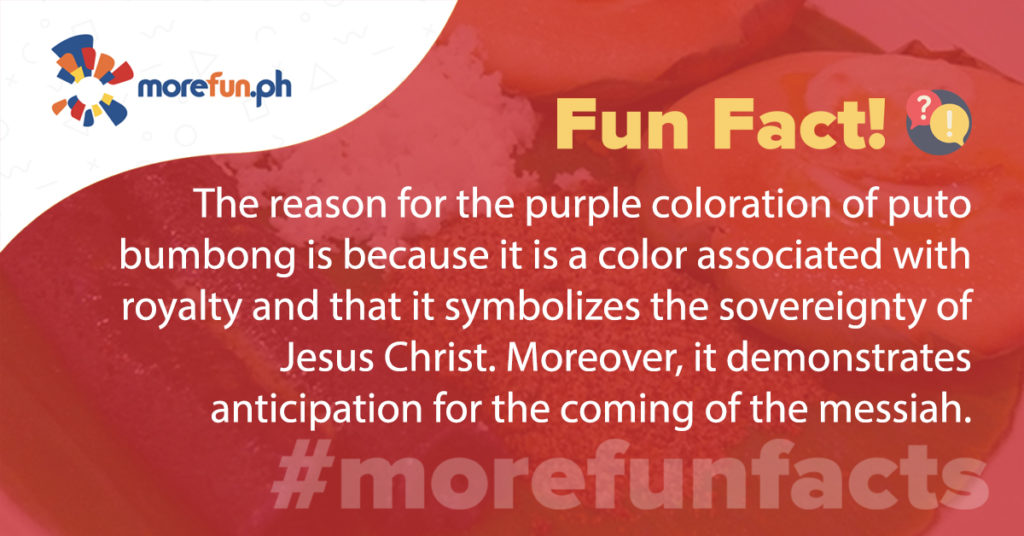Bibingka and Puto Bumbong: Classic Christmas Delicacies
The Philippines is not considered the cultural melting pot of Asia for no small reason. For more than three hundred years, the country was annexed as a protectorate by the Spaniards, only to be sold off to the Americans during the turn of the century, at which point it fell briefly under the control of the Japanese. And with each colonial power exerting their authority over the country, came a diffusion of their culture – their language, their art, their religion, their food.
But the more interesting fact is that long before it was “discovered” by the Western world (through the expedition of one Ferdinand Magellan), our ancestors was in active trade with neighboring countries such as Borneo, Cambodia, Java, Siam, and China.
And in the 16th century, waves of Chinese immigrants from the coastal provinces of Canton and Fujian arrived in the country, bringing with them their own cultural sensibilities, becoming a major influence in our culture.
Nowhere is this more evident than in our cooking – particularly so, during the Yuletide season. If one was to ask the average Filipino on the street what type of food they’d be having during the Christmas (aside from Noche Buena fare, of course), chances are they’ll reply with either (or both) Bibingka and Puto Bumbong.
Bibingka is a soft and spongy flat cake that is lightly charred on both surfaces and is infused with the distinctive aroma of toasted banana leaves. Made out of rice flour mixed with coconut milk, the bibingka is usually cooked in clay pots which are lined with banana leaves. Afterwards, the cooked bibingka is topped with a layer of butter / margarine and served with a sprinkle of grated coconut flakes and sugar. There are special variants which are topped with additional ingredients: from salted duck eggs, pineapple, pinipig (toasted glutinous rice), cheese, and even vanilla ice cream.
Historically, the bibingka is a result of Chinese influence on Filipino culture. The name comes from the Hokkien (Southeastern Chinese) root word “BI” which roughly translates to uncooked grain.
In Indonesia, there is a similar traditional dish called bingka. Instead of being a Christmas-time delicacy their version is more associated with breakfast. It can be commonly bought in their market, being sold by hawkers as a quick breakfast alternative for people on the hurry.
Puto bumbong is a violet-colored rice cake with a unique shape that shares bibingka’s association with the holidays. Its name derives from the word “puto”, which translates to “steamed gluttino” in Filipino, and “bumbong”, which refers to the cylindrical bamboo in which the rice cake is cooked in. The primary reason for its unique color is because purple is the main liturgical color associated with the conception of Jesus Christ.
The puto bumbong is made by filling bamboo tubes with ground glutinous rice which is then steamed until it is cooked. After that, the elongated rice cake is slathered with butter and brown sugar, and served with a side of shredded coconut.
Elsewhere in Asia, the puto bumbong is known as kue putu, and unlike in the Phiippines, it is colored green. Although it is traditionally filled with palm sugar, in modern times the filling is instead replaced with beef floss or chocolate.
Both the bibingka and the puto bumbong are Filipino staples during the cold and dry days of December. They are usually sold by vendors lined up outside churches and shopping centers, where they are commonly patronized by church-goers and as “pasalubong” by people on their way home.
In 2011, residents of Mandaue, Cebu prepared an enormous bibingka both as part of their annual “Bibingka Festival” and an attempt to break the world record for the largest rice cake in the world (a title currently held by South Korea). The giant rice cake was made from 50 sacks of glutinous rice, 50 sacks of sugar, and milk from 13,500 coconuts. Their finished product measured at 182 square meters, with a diameter of 50 feet and a thickness of 3 inches.
